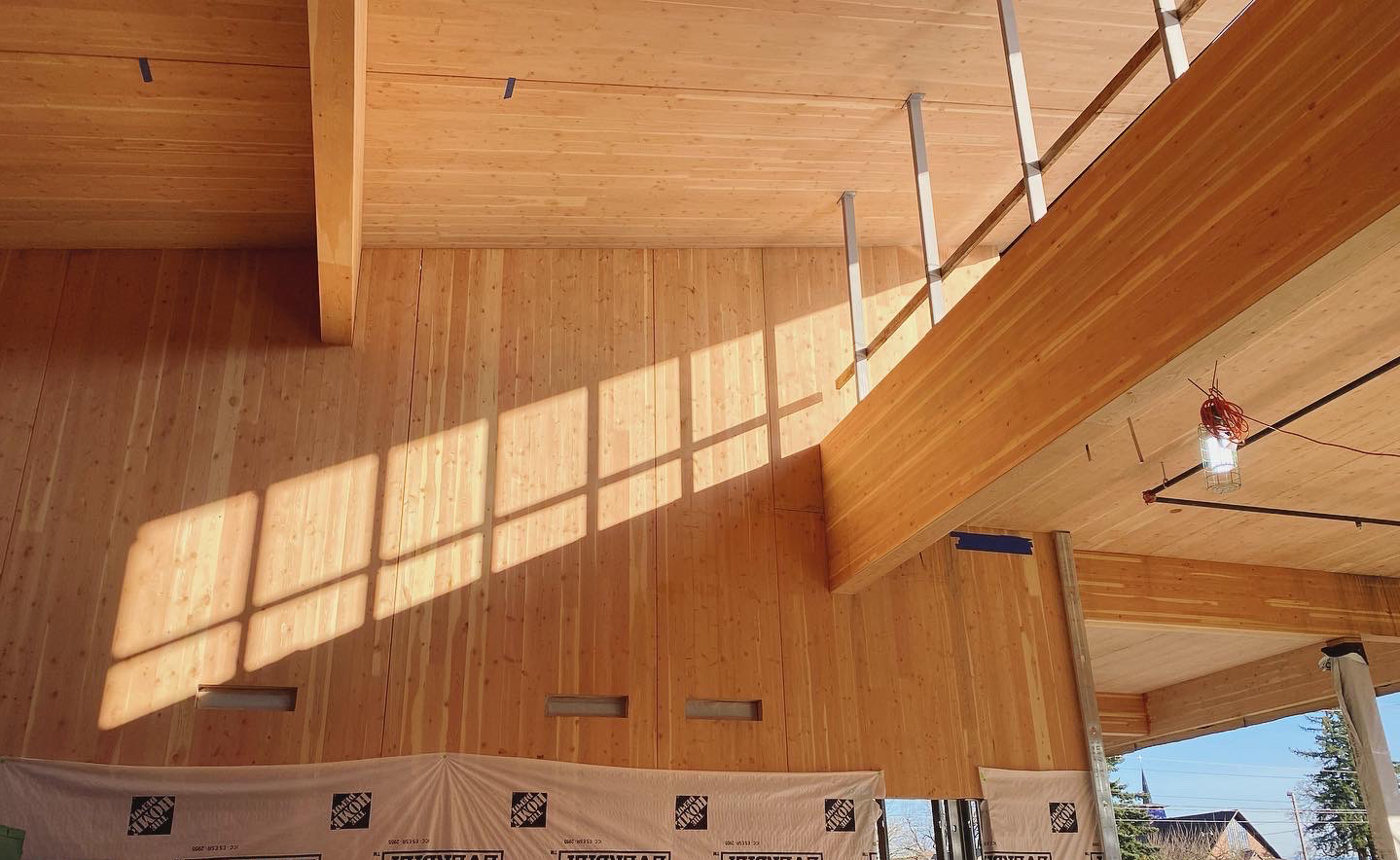In the United States, mass timber has become an affordable, beautiful and sustainable alternative to traditional construction materials.

Designers and contractors in the Pacific Northwest’s A/E/C industry are leading the charge in bringing thoughtful new timber projects to life, and FFA is no exception. Currently, the firm has three cross-laminated timber (CLT) project under construction, and another mass plywood panel (MPP) project in its final stages of design/permitting.
With the surge in popularity of mass timber, it’s necessary to ‘get your place in line’ with manufacturers. While the prefabricated nature of CLT allows construction to move more quickly than traditional methods, the availability of a custom manufactured product causes it to be a long-lead item for the construction process. We advocate for early collaboration with both the contractor and the manufacturer. This is necessary because of the concentrated ‘push’ early in the design process to compile and complete engineering components for pre-fabrication.
There are many unique aspects to Public Safety facilities, but the intent of creating a warm, inviting environment for all users is a common thread we’ve found through our design processes. By utilizing a structural system that embodies warmth and meets the human need for a connection to nature, our CLT projects accomplish a wide range of goals with one choice: mass timber.
On our Robert Libke Public Safety Building project in Oregon City, the nature of the building as a single-story essential facility on a large open site created the opportunity to design a ‘completely wood’ mass timber project. There is a CLT roof, CLT bearing/shear walls, and glulam columns and beams. The result is a space with a warm glow on the Douglas Fir surfaces that surround building occupants.
As with all construction projects, there have been challenges to tackle as a team. One such ‘test’ for the Design and Contractor Teams was finding the best way to consolidate MEP systems and routing to certain areas of the building. This consolidation of ductwork, piping, and conduit allows the wood structural system to be the focus of specific spaces (such as the Multipurpose/Courts/Commission Chambers Room, Open Office areas, and the main circulation spine). It also means extra coordination with our engineers during design and further conversations with the contractor and their subcontractors during construction. As FFA is not one to back down from a challenge, we’ve been leading the process while utilizing 3D BIM modeling to facilitate discussions together as a team. As the building comes together, it’s rewarding for everyone to see the detailed effort pay off with beautiful spaces for our client.





